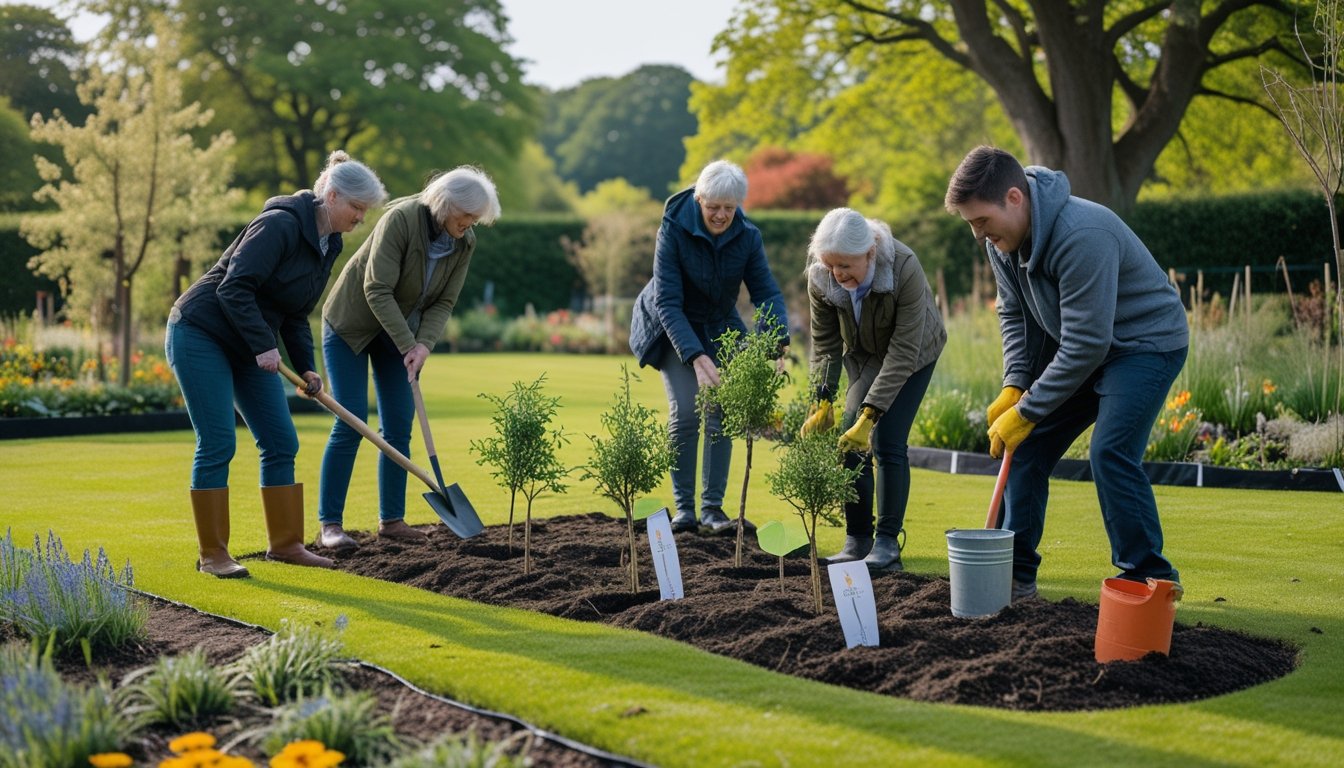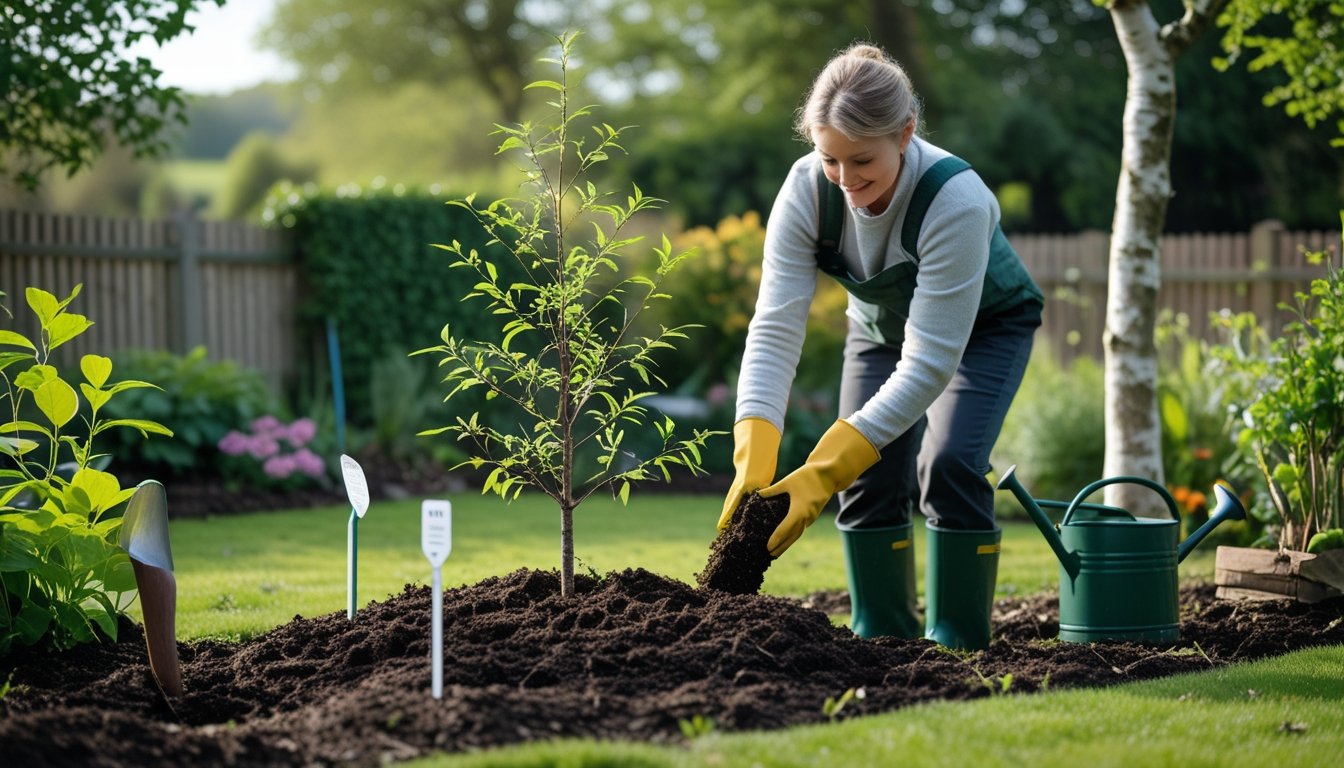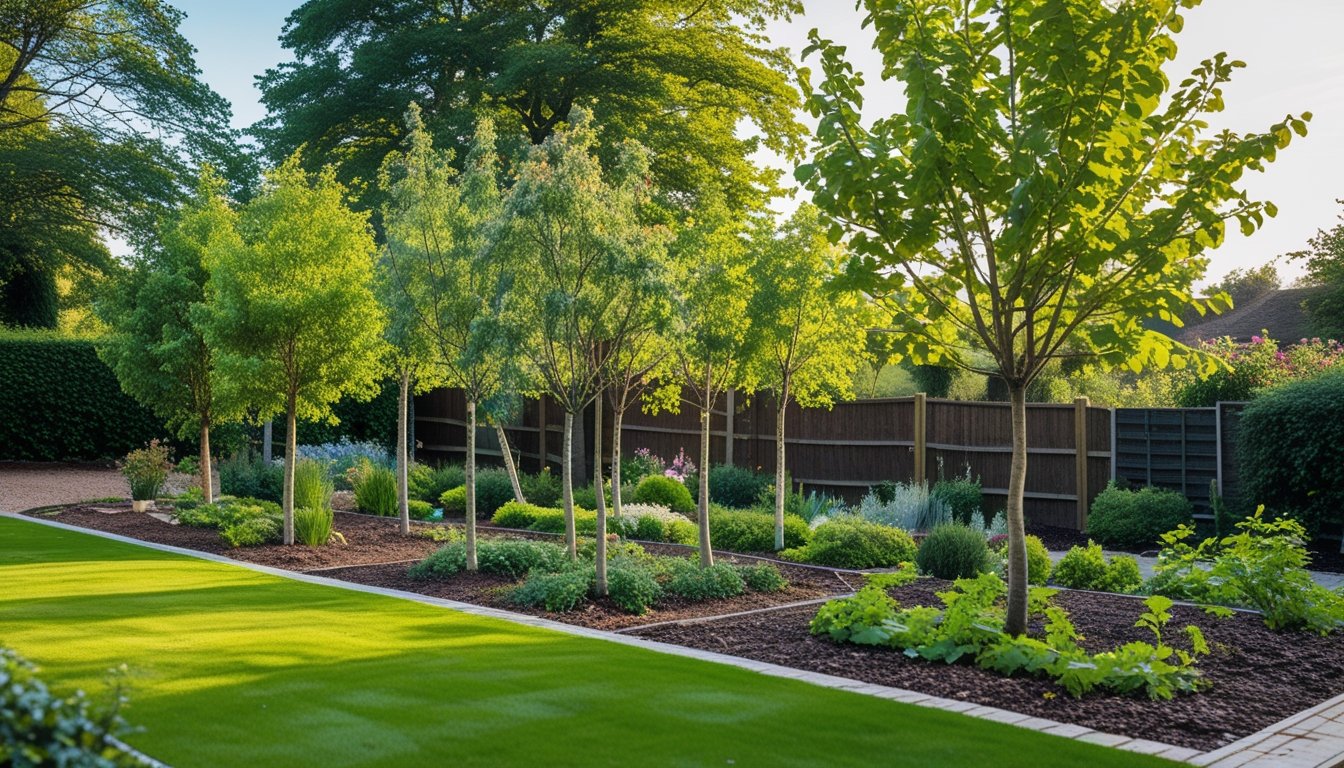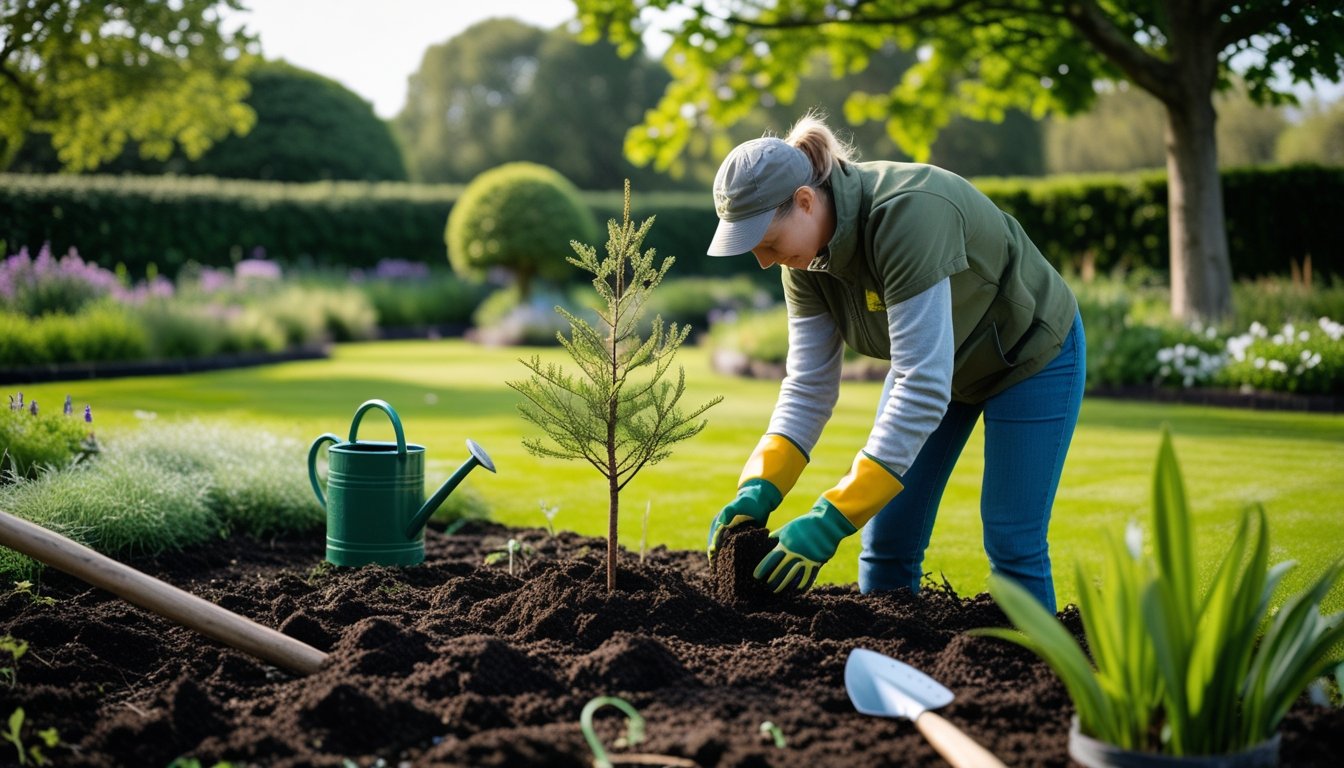Late updated: 17 Aug 2025 13:08
Written by: Emily Thornton
Planting Native Trees For A UK Garden Makeover: Enhancing Biodiversity And Beauty
Breathing new life into our gardens through a makeover can be both exciting and rewarding. One of the most impactful ways to transform our green spaces is by planting native trees. Native trees offer countless benefits, such as supporting local wildlife and thriving in the British climate, making them a smart and sustainable choice for our gardens. These trees have evolved alongside the local fauna, ensuring a resilient ecosystem that benefits both the environment and us.

In reimagining our gardens, we often consider aesthetic appeal, practical benefits, and environmental impact. Native trees tick all these boxes. From the charming hues of the field maple to the towering elegance of the hornbeam, there’s a tree for every style and function. Their adaptability to the local soil and weather conditions not only ensures lush growth but also requires minimal maintenance, making them an ideal option for those looking to add beauty and biodiversity to their gardens.
By integrating native trees into our garden design, we pay homage to the rich tapestry of British flora. Whether in quaint village settings or bustling urban backyards, these trees offer a slice of nature's tranquility, all while contributing to a healthier planet. Let’s explore the diverse species that can redefine our garden spaces and the simple steps to ensure their successful planting and growth.
Key Takeaways
- Native trees support local wildlife and thrive in the British climate.
- These trees require minimal maintenance and offer aesthetic benefits.
- Integrating native trees enhances garden biodiversity and sustainability.
Key Considerations When Planting Native Trees For A UK Garden Makeover

When planting native trees for a UK garden makeover, it's vital to consider the benefits of choosing native species, plan the layout thoughtfully, select the right tree size, and source from local British growers. Each of these elements plays a significant role in ensuring the success and sustainability of your garden.
Benefits Of Choosing Native Trees
Native trees are an excellent choice for garden transformations due to their adaptability to the local environment. Benefits include enhanced support for local wildlife, as these trees provide food and habitat for native species. Additionally, they contribute to maintaining local ecosystem balance, improving soil quality, and conserving water, as they are better suited to the UK's climate and soil conditions compared to non-native species.
By choosing native trees, we also support biodiversity, which is vital for resilient ecosystems. These trees tend to require less maintenance, as they are naturally resistant to local pests and diseases. Opting for native species can create a more sustainable and environmentally friendly garden, helping us lessen our carbon footprint while enjoying a beautiful green space.
Planning Tree Placement In Small Gardens
The layout in small gardens requires careful planning to maximise space and create a visually appealing design. Start by assessing the available space and noting any existing structures or restrictions. Prioritise choosing species that suit your specific garden dimensions, considering their maximum height and spread.
It's a good idea to sketch a simple layout plan, indicating where each tree will be planted. Aim to leave enough space for mature growth, ensuring trees don’t overwhelm smaller gardens as they reach their full size. Use vertical space creatively, perhaps opting for columnar or dwarf varieties to add height without taking up too much ground space, helping create a lush yet manageable environment.
Selecting The Right Tree For Your Garden Size
The success of planting native trees hinges on selecting the right species and size for your garden. Consider the available space and the specific conditions of your garden, such as sunlight exposure and soil type. Some native British trees, like rowan or birch, are ideal for smaller gardens due to their moderate height and root systems.
Make a comparison list of potential species, factoring in growth rate, canopy shape, and root spread. It's crucial to match the tree's characteristics with your garden's unique conditions to ensure healthy growth. Also, consider your maintenance capacity, as some trees require more pruning than others to keep them within desired limits.
How To Source From British Growers
Sourcing native trees from British growers is a sustainable practice that supports the local economy and ensures plants are well-suited to local conditions. Start by researching reputable nurseries that specialise in native species. Visiting these nurseries can provide a firsthand look at plant health and allow us to ask questions directly to knowledgeable staff.
Emphasising local provenance is important, as trees grown locally are better acclimatised. This practice reduces the risk of introducing pests and diseases from other regions, contributing to a more sustainable gardening approach. Establishing relationships with local growers can also offer access to a wealth of advice and ongoing support for your gardening endeavours, ensuring a thriving and beautiful native tree landscape.
Best Native Trees For UK Gardens

Planting native trees in UK gardens provides a wealth of benefits, from enhancing biodiversity to ensuring the survival of local wildlife. Key species such as Silver Birch, Rowan, Crab Apple, and English Oak stand out for their adaptability and attractive features.
Silver Birch (Betula pendula)
Silver Birch is known for its striking white bark and delicate, graceful form. It adds elegance and movement to the garden with its slender branches that sway in the breeze. This tree is versatile, thriving in various soil conditions and sunlight levels. Additionally, Silver Birch supports numerous bird species and insects, contributing significantly to the local ecosystem. Its yellow autumn leaves offer a seasonal display, making it a popular choice for gardeners looking to add both aesthetics and ecological value to their outdoor spaces. Our gardens greatly benefit from its presence, encouraging a rich and dynamic habitat.
Rowan (Sorbus aucuparia)
Rowan trees, also known as Mountain Ash, are coveted for their vibrant orange-red berries and delicate pinnate leaves. These berries not only provide a stunning visual but serve as a crucial food source for birds during the colder months. Rowan thrives in a range of conditions and is particularly useful in smaller gardens due to its modest size. Historically revered for its protective properties and rich cultural significance, Rowan trees also reward us with clusters of creamy-white flowers in the spring. Their adaptability and contribution to the local wildlife make them a meaningful addition to UK gardens.
Crab Apple (Malus sylvestris)
Crab Apple trees are a charming choice with their delightful pink and white blossoms in the spring. This tree is beneficial for encouraging pollinators such as bees, essential for a thriving garden ecosystem. The small apples that follow are not only visually appealing but attract a variety of wildlife, from birds to small mammals. We find Crab Apple trees adaptable, coping well in different soil types and weather conditions. Their historical use in culinary traditions also adds a touch of heritage, making them a cherished part of British gardening.
English Oak (Quercus robur)
The English Oak stands as a symbol of strength and endurance in UK gardens. Known for its longevity, this majestic tree fosters an incredible abundance of life, supporting hundreds of species including insects, birds, and mammals. Its acorns are a vital food source for wildlife, contributing to the ecosystem's health. English Oaks prefer well-drained, moist soil and can grow to impressive sizes, making them ideal for larger gardens or parklands. Beyond their ecological value, they possess a distinctive beauty that enhances the landscape, offering shade and a sense of history to those who plant them.
Frequently Asked Questions

When planning a UK garden makeover with native trees, it's essential to select species that benefit local wildlife, design for low maintenance, and follow effective principles for both aesthetic and environmental success. Careful planning in layout and plant selection can create a thriving and inviting space.
What are the best native trees to plant in a UK garden for wildlife support?
In the UK, oak trees are a keystone species, supporting thousands of organisms, making them an excellent choice for a wildlife-friendly garden. Other beneficial trees include the rowan, which is popular for its vibrant berries, and the silver birch, which is fast-growing and favoured by insects.
How can I design a low-maintenance woodland garden in the UK?
To create a low-maintenance woodland garden, we should aim for a diverse mix of native trees and shrubs that are well-suited to the local soil and climate. This reduces the need for extensive care. Native plants adapt more easily, needing less watering and fertilising.
What principles should I follow when creating a woodland garden layout?
When designing a woodland garden, it's crucial to consider layering with varied heights, from tall trees to ground cover plants. Designing with natural curves and clusters can mimic nature's spontaneity, enhancing both beauty and biodiversity. Adequate spacing allows plants to thrive without overcrowding.
What are some effective methods for creating woodland garden paths?
Creating paths that blend with the environment is key for an authentic woodland feel. Natural materials like bark mulch, gravel, or stepping stones offer a practical and visually pleasing solution. Curved paths can add an element of discovery and seamlessly integrate with the surrounding landscape.
Which plants are ideal for a native woodland planting scheme?
Ideal plants for a native woodland setting include shade-tolerant species such as ferns and bluebells. These complement trees like hazel and silver birch. Incorporating a variety of flora ensures year-round interest and supports diverse wildlife.
How can I ensure my woodland garden is both attractive and environmentally beneficial?
To achieve an attractive and eco-friendly woodland garden, prioritise biodiversity by using a wide range of native species. This supports local wildlife and maintains ecological balance. Structuring spaces to allow light variation through tree canopies promotes healthy growth and visual appeal.
